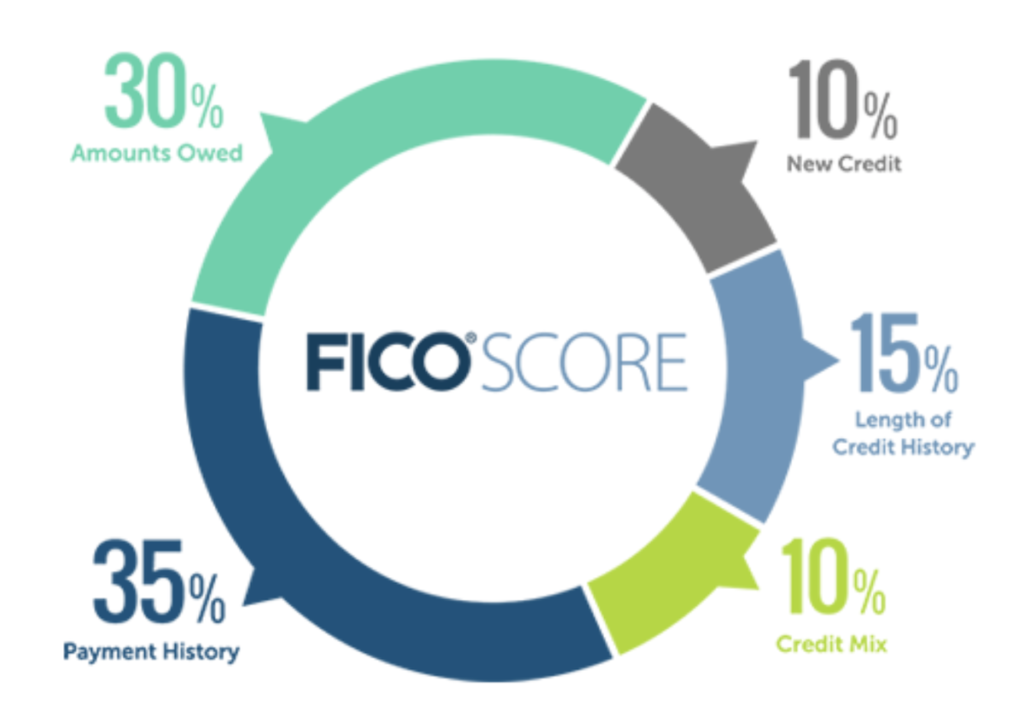Last updated on November 7th, 2023 at 03:37 pm
Last Updated on November 7, 2023 by
Are you losing your home or investment property because you can not afford the mortgage payment? Consider using a “wraparound mortgage” or “subject to” method to sell your property before it forecloses. A seller-financed, wraparound mortgage can help you to sell your property immediately. A wraparound mortgage offered to a buyer can stop the foreclosure and provide cash to you. Even if you are in the foreclosure process, this form of seller financing can help you stop the foreclosure process. Check out our 13 item checklist at the end of this article.
vacation rental income has fallen considerably due to too many properties available, a vacation rental is a great property to sell with a wraparound mortgage
Many people let their property slip into foreclosure proceedings because they could not sell it in time or failed to act altogether. Many mortgage companies will work with borrowers to put late payments on the loan to bring it up to date. This only happens when the lender knows you will be able to keep up with the payments. When you can’t it’s time to sell your house. If you are one of many borrowers who wait until the last minute to deal with the mortgage lender, there are still options.
Terms used to describe a wraparound mortgage
- All-inclusive mortgage
- Agreement for sale
- Overriding mortgage
- Secondary financing
- Wrap loan
List your property with a real estate agent and offer owner financing. You will probably receive offers quickly from people who are not in a position to put down a large down payment or have some credit issues that prevent them from obtaining a loan. Lots of people have had credit issues including those with a short time on the job. They can afford to make the mortgage payment but due to that bankruptcy court action, they can not find a lender willing to work with them.

Being late is bad, foreclosure is worse, a wraparound is better
You can be their best friend and they can potentially save your credit. Yes, being late a couple of months is bad but a foreclosure is worse, you may lose all of your equity from the original loan. This of course assumes that the house you are selling is the cause of your financial problems. If the house were gone, you could afford to pay for everything else. Selling the house may preclude contacting bankruptcy attorneys and going further into a credit hole.
At present, you have a mortgage on your property. The monthly payment probably includes taxes and insurance. The best way for you to offer owner financing is to permit the new buyer to assume your loan or wrap your loan. Very few lenders will permit this but when all else fails, this is a solution that has worked for many. This is how a wraparound mortgage works:
Your mortgage is $200,000
Your monthly payment is $1,200 (principal and interest)
The buyer agrees to pay $210,000 for the property (or more if you can get it)
Your new buyer agrees to make the payment directly to the mortgage company as if it came directly from you.
You are two monthly mortgage payments behind on your mortgage or $2,400 plus late fees of $100.
The buyer brings $10,000 to closing. $2,500 is sent to the mortgage company to clear the balance bringing the mortgage up to date.
You pay the closing attorney/escrow $2,500 for their fees and title work. You walk away with $5,000 in your pocket and an up-to-date mortgage
The process requires a promissory note which the closing escrow company will prepare. A deed of trust is also prepared. Depending upon your state, multiple other documents will be created. I recommend a letter of intent laying out all of the details of a wraparound mortgage that have been agreed upon. The term is usually about 5 years with a balloon payment due at that time.
Closing requirements are similar to a regular sale
The buyer must come to the table with sufficient funds to reimburse you for the household insurance that you have already purchased. For example, your mortgage company paid the annual amount three months ago. The escrow company will require the buyer to pay you for the balance of the year or 9 months at closing. The same is true for property taxes.
These are actions that take place for any regular sale of property. Still, the buyer saves the considerable mortgage origination and processing fees by taking over the existing mortgage.
There are loss mitigation options that can be built into the deal. The buyer will make payments directly to the mortgage company yet you as the person responsible for paying off the original mortgage will have internet access to determine whether the payments are made on time.
The monthly payments should be set up on a bill-pay basis by the buyer to avoid any contact with the mortgage company. As mentioned above, most mortgages have a due on-sale clause which would require you to pay off the mortgage when you sell the property. Don’t let them know about the wraparound arrangement.

The buyer must pay for insurance and taxes too
If insurance and taxes are escrowed, the buyer will pay the principal and interest payment plus the monthly amounts for the taxes and insurance. An example is that the buyer will have to pay the previously stated $1,200 per month. The insurance payment may be $200 per month and the property taxes may be the same at $200 per month. This makes the buyer’s monthly payment $1,600 per month. That entire amount is paid to the mortgage company each month.
The seller will be responsible for ensuring that the annual homeowner’s insurance is paid by the mortgage company each year. Working with the buyer to obtain the lowest cost should be required. The buyer understands that the property tax amount and the insurance will change each year and probably increase. This means you will need to notify the buyer during the five years before the balloon is due that the payment has changed.
The buyer gets a deed for the property and the buyer knows that there is a lien on the property which is the first mortgage from the seller. There is a risk here but if the buyer does not put down much money the risk is fairly low for the buyer. If the loan is called by the bank when they find out about the wraparound mortgage, the buyer can obtain a new loan from the same mortgage company or another provider.
The seller is protected because the seller makes payments directly
The buyer is protected because the buyer is making the verified payments directly to the mortgage servicer. Should the buyer stop making payments to the mortgage servicer, the seller can step in, take back the property, and keep making the mortgage payments. At this point the mortgage is current and the property can be resold or the seller can decide to rent the property. Home sellers can use this wraparound mortgage option to stop a foreclosure.
An example of a real-world transaction
Here are two examples that I was involved in:
An individual had offered for sale through the multiple listing process, a house with five rental units on the same property, a package deal. We negotiated a price and started the purchase process. I was going to finance the purchase and the lender started working on the mortgage loan. About one week into the process (usual 30-day close), the seller notified us that the mortgage company was going to foreclose in four days.
The lender said they could not close the deal that fast. Time for plan B a fast wraparound mortgage. Given that this property was going to slip away and the owner would walk away with zero, we renegotiated the deal. I would bring the note up to date immediately and the seller would receive a down payment sufficient to pay the real estate commission and walk away with a few thousand dollars.
She was allowed to rent back the house for 90 days. When we obtained a new loan or sold the property, she would receive a final payout. The total she would receive was very small compared to what she would have received if she had not been in foreclosure.
Everyone was pleased. She kept her credit from showing a foreclosure, had a place to stay, and a few thousand dollars to get a new start. She moved shortly after and we rented her house. The income was significant and the deal was very profitable. Then came the issue.
Then came the issue
About one year after we bought the house on a wraparound mortgage, the seller contacted the mortgage company and told them to stop sending statements as she had sold the property. She must have had a few too many that day and forgot about our arrangement. No contact with the mortgage company.
The mortgage company enforced the “due on sale” clause of the contract and required a payoff within 30 days. We had to move fast but my lender was able to get the mortgage completed. Not only had we purchased the property well under its real value at the time but in that one year it increased in value.
No additional funds were required to close out the loan as sufficient equity existed. We paid what we had agreed to the seller and she was thrilled to receive about $40,000 in cash.
Two years later, a real estate agent contacted me about selling, he had a buyer. The property was not listed but the buyer wanted it and the price we agreed to was many zeros above my entire investment. I mean many zeros. This one worked out for everyone. Of course, I sought legal advice on this deal at the time to be sure we were on solid ground. While the wraparound mortgage violates some mortgage agreements, it is not illegal.

Second example of how a wraparound worked
My second example is about a person who wanted to sell his house in a climate where high-interest rates were causing issues for potential buyers. To get the price he wanted without discounting the price of the house, he decided to offer seller financing at my suggestion. He had a mortgage which amounted to about 40% of the total value of the house. I introduced a buyer who has good credit but lacks of funds to make a normal down payment. They agreed on a price and a wraparound mortgage.
I suggested and they agreed to use the five-year balloon, thirty-year amortization plan. This would give the buyer a sufficient period to obtain a cost-effective 30-year fixed-rate mortgage shortly. The seller had a mortgage rate of just under 3%. The buyer was paying 8%. I suggested that the interest rate for the seller be a bit higher than the current rate because of the lower down payment. Both parties agreed. The term of the mortgage is 60 months (5 years) with a balloon payment due. Remember this is a short-term fix.
Its a mistake thinking you can hold on to a property that you clearly cannot. do not take funds from your 401k to prop up a loosing deal
The buyer saved the mortgage origination points and loan costs associated with a regular mortgage. He was able to buy a property he wanted at a fair price with a small down payment. The seller is earning a bit more than 5% on the interest rate spread and earned a considerable amount of equity on the sale. Federal law will not tax the seller on the proceeds. I suspect that the buyer will wait for interest rates to subside before going after a regular mortgage.
You have options other than a wrap-around
As a seller, you have options other than a wrap-around or subject to procedure if you act fast enough. The most common process is the deed instead of foreclosure. This means that the bank agrees to take your property under a mutual agreement. You surrender the property and the bank does not have to foreclose. With a first mortgage, there is usually a non-recourse clause which means that all that is due to the mortgage company is that which is secured by a mortgage. If they lose money on the sale with a deed instead of foreclosure, you are not on the hook for it.
By selling your house using the legal process described above as a wrap-around mortgage, you can avoid a number of bad things such as the bankruptcy process and a foreclosure sale. All of which are bad for your future credit. You may even find a cash buyer who will bring the mortgage up to date and take the property off your hands by giving a few dollars as a going-away thank you.
You can also do a short sale which means that the bank will permit the real estate agent to offer the house for sale and they will hold off foreclosure. If the property was for example valued at $200,000 and the bank accepted an offer of $180,000, you are still off the hook on the first mortgage. If you have a second mortgage, the process gets a bit rough. Second mortgages usually do not have a non-recourse provision and you may be on the hook for the entire amount of any loss they sustain.

Mortgage foreclosures are on the rise, get ahead of yours
Mortgage foreclosures are on the rise as this is written which tells me that many people are not paying attention to articles like this one that offer the best option on how to get out of the financial mess you have found yourself in. It’s a good idea to look at all possibilities when you must get out of your home. Some readers may not have any financial issues they just need an effective way to sell their home fast. Having that peace of mind that there are options may help you.
If you choose to go the route of a subject-to or wrap-around mortgage, be sure you are working with a closing attorney or escrow company that understands this process and can create all of the necessary documents. I recommend that a real estate agent represent the seller at the least to make sure everything goes well. These are not yet typical real estate transactions so many agents may not understand the complexities. Find one that does.
Conclusion
Wraparound mortgages are not for everyone. There are risks for both parties. Risks can be mitigated as mentioned above when working with knowledgeable individuals from a real agent to the closing attorney or escrow office. Wraparound mortgages can be a lifeline for many, not just to avoid bankruptcy but when you can not sustain a second home mortgage or must move immediately.
Remember, the original mortgage will be on your credit report and it may cause issues if you are buying a home. You can also show the income from the original house and many lenders will use that income to offset the existing mortgage. Of course, if you own the house you are selling without a mortgage, all the better. You will earn a great rate of return with the mortgage as security on the loan.
The wraparound mortgage should be used as a temporary fix
The wraparound mortgage is not a permanent fix to your short-term problem. As a buyer, you should make contact with a mortgage loan broker and determine what you will need to flip the wraparound mortgage into a long-term mortgage. Your discussion will include the appropriate timing to apply for a new loan and what you will need at that time to be successful. This can include your credit score, the ratio of debt to income, and any requirement for downpayment and closing costs.
CHECKLIST FOR A WRAPAROUND MORTGAGE
- Interest rate – list rate as an APR e.g. 8%
- Loan term – number of months e.g. 60
- Balloon payment – If this has a balloon payment how much will be due
- Prepayment – Can the loan be repaid earlier without fees?
- Monthly principal and interest payment – What is this amount based upon the above?
- Annual cost of homeowners insurance – This is an amount the buyer must pay above and beyond the principal and interest.
- Annual property taxes – The buyer must pay this amount as well.
- Escrow – Will property taxes and insurance be escrowed? This is a yes if the original mortgage has escrow. If there is no escrow with the original mortgage servicer, the owner can still require that insurance and taxes be paid in advance at closing and the monthly payment will include 1/12th of these amounts.
- Will an inspection of the property be included? Who will pay? If there are issues found, how will this affect the sale terms? If the seller has no funds to make repairs, will the cost be reflected in the price?
- The seller must produce copies of the following: Current mortgage statement, Homeowners insurance policy, flood policy, warranties in effect, the last escrow analysis, and other documents as required.
- The sales contract must include the purchase price of the house, terms of downpayment if any, contingencies if any, and other details required to close including the estimated closing date.
- Select a closing attorney or escrow company that will agree to prepare the Note, Deed of Trust, and all other documents required to close
- Create a document listing the agreement not to contact the mortgage servicer about the sale. Be specific that the seller will not notify the mortgage servicer about the sale of the property. Include in this document the method by which the buyer will make payments directly to the mortgage servicing company. If there is no escrow, detail how the buyer will compensate the seller for ordering the insurance and how the buyer will compensate the seller for paying the property taxes. This document can become part of the agreement.
Please read more about this and other topics regarding mortgages and buying and selling homes. Logan-Anderson Gulf Coastal Realtors offers assistance to our clients including referrals to loan brokers and closing attorneys.




